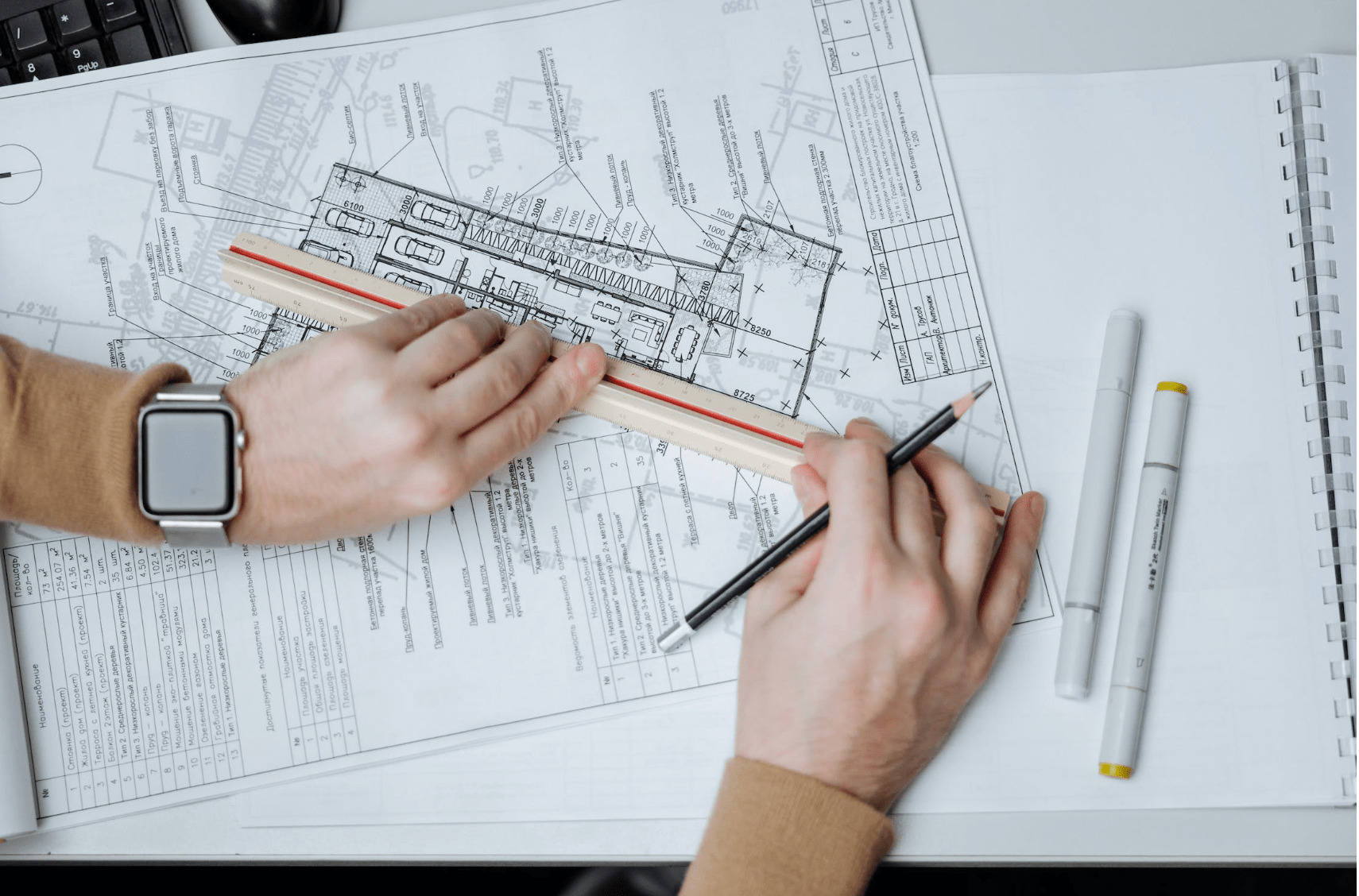Architect Rules for Designing Timeless Interiors
Architect Rules for Designing Timeless Interiors
Blog Article
Comprehending the Diverse Career Paths Available for Aspiring Architect
As an ambitious Architect, you have a globe of career courses awaiting you. Each course supplies unique obstacles and opportunities to apply your creativity and technological knowledge. Whether you're attracted to traditional design or the subtleties of lasting layout, there's a specific niche that straightens with your interests. Comprehending these varied options can shape your expert trip, but which direction will you select to discover first?
Traditional Architecture: Designing Structures and Frameworks
Typical design concentrates on making buildings and structures that mix capability with visual appeal. As you explore this field, you'll value the detailed equilibrium between type and objective. You'll find out to draw inspiration from historical designs, including components like balance, products, and craftsmanship. Your styles can show social heritage, showcasing regional customs while satisfying contemporary requirements.
You'll create skills in preparing, model-making, and site evaluation, permitting you to picture and interact your ideas efficiently. Engaging with customers, you'll require to comprehend their vision and translate it into feasible layouts.
Moreover, developing codes and sustainability practices are vital in your work, ensuring your frameworks are ecologically friendly and safe. As you expand in your job, you'll locate possibilities in household, commercial, and even restoration projects, each offering special difficulties. Embracing standard architecture leads the method for a satisfying profession that pays homage to the past while forming the future.
Urban Planning: Forming Communities and Public Spaces
As an ambitious Architect, you can play an important duty as an urban organizer, transforming just how areas work and engage. By using area engagement strategies, you'll guarantee that residents have a voice in forming their environment. Plus, incorporating lasting design concepts will certainly help produce areas that not just meet today's needs yet additionally protect the future.
Function of Urban Planners
While many could assume of engineers as the single visionaries behind buildings, city organizers play an essential role in forming the wider landscape of neighborhoods and public spaces. By collaborating with numerous stakeholders, you'll assist create parks, transportation systems, and domestic areas that advertise social interaction and ease of access. Your knowledge in spatial design and area dynamics permits you to imagine future growth while preserving social heritage.
Neighborhood Engagement Strategies
Reliable neighborhood involvement techniques are vital for city coordinators to guarantee that the voices of residents are listened to and valued in the planning procedure. To promote meaningful discussion, you ought to focus on open forums and workshops where community members can share their concepts and problems. Usage studies and social media sites to reach a broader target market, guaranteeing varied perspectives are included. Teaming up with regional companies can improve trust and assist in deeper links. It's vital to provide clear info about decision-making processes and proposed projects, permitting citizens to really feel educated and empowered. By proactively listening and including feedback, you'll develop areas that reflect the neighborhood's demands, eventually resulting in even more sustainable and effective urban environments. Welcome openness and constant discussion for enduring impact.
Lasting Style Principles
When making city areas, incorporating lasting design concepts is important for creating settings that flourish both environmentally and socially. Think about integrating environment-friendly areas, like parks and yards, to boost biodiversity and enhance air quality.
Designing with water preservation in mind is likewise vital-- think of rainfall yards and absorptive surface areas to handle stormwater. Entailing neighborhood participants during the planning procedure assurances that the spaces you produce meet their demands and encourage social communication. By embracing these principles, you'll add to lively, lasting urban landscapes that benefit every person.

Landscape Design: Developing Lasting Exterior Environments
As you explore landscape style, you'll find necessary design concepts that produce stunning and functional exterior areas. Lasting methods play an important role in ensuring these environments thrive while minimizing environmental effect. Plus, you'll locate a selection of profession opportunities that permit you to make a real distinction in how people connect with nature.
Layout Concepts in Landscape
Recognizing style principles in landscape architecture is important for developing sustainable outside environments that balance with nature. You'll require to contemplate aspects like percentage, balance, and range to assure your designs feel cohesive and welcoming. Integrating native plants not just enhances biodiversity yet likewise reduces water use, making your landscape durable. Think of the flow of area and just how people communicate with it; paths and seating locations need to invite exploration and leisure. Furthermore, take note of seasonal adjustments, designing with materials that complement the surroundings year-round (Architect). By prioritizing sustainability and aesthetic appeals, you can develop exterior rooms that improve the area and advertise health. Welcoming these concepts will certainly establish a solid foundation for your occupation in landscape design.
Sustainable Practices Overview
Lasting practices in landscape design not just concentrate on aesthetic appeals yet also prioritize eco-friendly wellness and resource conservation. You can develop areas that advertise dirt health, such as exercising and making use of organic materials permaculture concepts. Inevitably, these techniques assure your layouts profit both individuals and the environment for years to come.
Career Opportunities Exploration
With a strong foundation in sustainable practices, landscape design uses a range of job courses that permit you to make a meaningful impact on the atmosphere. You might function as a landscape developer, creating visually pleasing and useful exterior spaces, or specialize in environmental restoration, helping to restore broken ecological communities. Urban planners usually collaborate with landscape architects to create green areas in city Check This Out setups, improving city livability. If you're passionate about education and learning, take into consideration ending up being a landscape architecture educator, motivating future generations. Furthermore, you might deal with nonprofits concentrated on environmental sustainability or engage in study to innovate new techniques. Each course not only forms attractive settings but likewise fosters a healthier planet for future generations.
Sustainable Style: Focusing on Eco-Friendly Practices
As you discover your career in design, embracing green methods can establish you apart in a competitive field. Lasting design concentrates on developing buildings that lessen environmental influence while enhancing passenger well-being. By including sustainable products, energy-efficient systems, and lasting building methods, you'll add to a greener future.
Start by acquiring expertise of green accreditations like LEED or BREEAM, which can strengthen your credentials. Consider exactly how all-natural light, air flow, and thermal efficiency can enhance style. Team up with designers and environmental specialists to introduce remedies that reduce waste and conserve resources.
Don't fail to remember the value of area participation-- interesting neighborhood stakeholders can motivate layouts that integrate with the setting. As customers significantly focus on sustainability, your knowledge in environment-friendly methods will certainly not just bring in tasks but additionally accomplish your enthusiasm for accountable style. Welcome this crucial aspect of the career, and see your job prosper.
Historic Preservation: Shielding and Recovering Social Heritage
While you begin on your architectural journey, consider the essential duty of historical preservation in maintaining our social heritage. This area concentrates on the security and remediation of significant buildings, websites, and structures that tell the tales of our past. By taking part in historic preservation, you'll aid secure the architectural legacy that forms neighborhood identity.
As a historic preservation Architect, you'll examine historical value and examine the condition of frameworks. You'll work closely with conservationists and chroniclers to ensure authentic repair methods are employed. This career path permits you to blend imagination with research, enabling you to make services that value original materials and workmanship.
Your work not only adds to sustainability by reusing existing buildings yet also fosters a feeling of pride within neighborhoods. Welcoming this path will aid you come to be a guardian of background, maintaining the tales and appearances that enrich our lives.
Inside Style: Enhancing Indoor Spaces
Historic preservation and interior design both share a dedication to enhancing the built atmosphere, however they concentrate on different aspects. While historic conservation stresses keeping a structure's historic and social value, interior architecture nos in on maximizing indoor spaces for performance and appearances.
As an ambitious Architect, you'll discover that indoor architecture allows you to blend creative thinking with technical skills. You'll create areas that not just look great however also promote comfort and efficiency. This field involves understanding how light, color, and products interact within a space, affecting state of mind and use.
You'll deal with numerous tasks, from household homes to business workplaces, making certain that each setting satisfies the requirements of its passengers. By prioritizing individual experience, you can transform interiors into inspiring and functional rooms, making a significant influence on just how people communicate with their surroundings. Welcome the chance to enhance indoor settings and shape the useful site way individuals live and function.
Industrial Layout: Combining Performance With Looks
Industrial design plays an important role in developing items that perfectly blend aesthetics with functionality, ensuring that what you make use of day-to-day is not only visually enticing however also practical. As an ambitious Architect, you can engage on your own in this field, focusing on creating everything from furnishings to customer electronics. Your work involves comprehending user requirements, materials, and manufacturing procedures, allowing you to develop ingenious solutions that improve everyday experiences.
In industrial style, you'll frequently collaborate with marketing professionals, producers, and designers, making certain that your designs are not only beautiful however additionally possible. You'll discover to balance type and feature, focusing on usability without sacrificing style. By developing your abilities in sketching, 3D modeling, and prototyping, you'll be fully equipped to bring your concepts to life. This occupation course supplies a vibrant setting where creativity meets practicality, making it a satisfying option for engineers curious about shaping the products of tomorrow.
Regularly Asked Concerns
What Educational Credentials Do I Need to End Up Being an Architect?
To come to be a designer, you'll need a specialist degree in style, commonly a Bachelor's or Master's. Furthermore, you'll have to finish an internship and pass the Architect Registration Examination to exercise legitimately.
Are There Accreditation Requirements for Various Building Profession Paths?
Yes, there're qualification demands for numerous architectural paths. Architect. You'll need to pass tests, total teaching fellowships, and often pursue specialized training, depending upon your selected emphasis, like landscape architecture, metropolitan layout, or historical conservation
What Software Application Abilities Are Necessary for Architects Today?

Exactly How Can I Gain Practical Experience While Studying Style?
You can get useful experience by interning at architectural firms, getting involved in style competitors, volunteering for area projects, or teaming up with classmates on real-world jobs. These opportunities boost your skills and develop valuable links in the industry.
What Task Opportunities Exist Outside Typical Design Firms?
You can explore different work chances outside traditional design companies, like urban planning, interior decoration, landscape architecture, construction administration, property growth, or even duties in sustainability consulting. webpage Each offers distinct obstacles and rewards.
Whether you're attracted to conventional style or the nuances of lasting style, there's a niche that lines up with your passions.When developing city spaces, including sustainable layout concepts is critical for creating atmospheres that flourish both environmentally and socially.As you explore landscape design, you'll find necessary style concepts that create beautiful and practical exterior rooms.Understanding design principles in landscape style is important for creating sustainable exterior settings that integrate with nature.In commercial style, you'll commonly team up with manufacturers, designers, and marketing professionals, making certain that your layouts are not only stunning but also viable.
Report this page